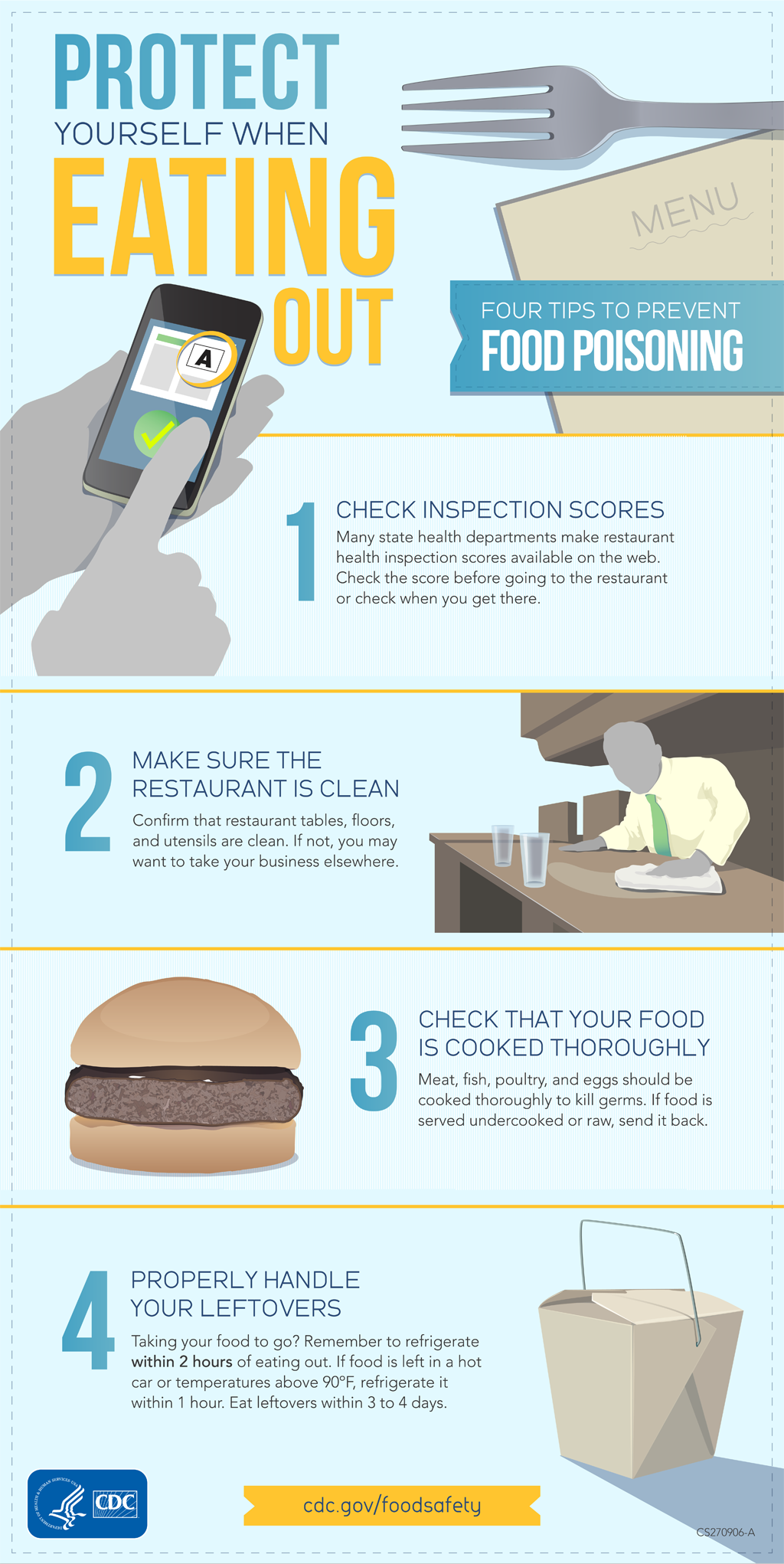Mother’s Day is the most popular dining-out holiday, followed by Valentine’s Day and Father’s Day. Research shows that 92 million American adults, or 37% of consumers, will dine out on Mother’s Day. Likewise, 32% of mothers surveyed say having a meal at a restaurant with their loved ones is the best gift they could receive. [1]
But when you dine out, you are putting your trust in other food preparers and handlers – hoping they follow safe food principles and procedures. Understanding that, you can take several steps to ensure that dining out is a pleasure that does not end up with foodborne illness.
 Image Source: Shutterstock
Image Source: Shutterstock According to the survey, age could factor into the type of restaurant meal they’ll have on Mother’s Day. Brunch is more common with Americans 65 or older, while diners 35 to 44 are more likely to choose dinner. Overall, here’s how Americans say they’ll celebrate Mother’s Day in restaurants:
- 10 percent will have a special breakfast
- 25 percent will eat brunch
- 45 percent will do lunch
- 47 percent will celebrate at dinner
- Learn about foodborne pathogens, cross contamination, cold and hot food safety, and best practices to prevent foodborne illness.
- Food Manager ANSI Certification: $99.00 - Valid in all States
- Food Handler Training: Only $7.00!
- 10% OFF: Enter Promo Code "train10off" at Checkout
Protect Yourself When Eating Out
- Check Inspection Scores
Many state health departments make restaurant health inspection scores available on the web. Check the score before going to the restaurant or check when you get there. - Make Sure the Restaurant Is Clean
Confirm that restaurant tables, floors, and utensils are clean. If not, you may want to take your business elsewhere. - Check That Your Food Is Cooked Thoroughly
Meat, fish, poultry, and eggs should be cooked thoroughly to kill germs. If food is served undercooked or raw, send it back. - Properly Handle Your Leftovers
Taking your food to go? Remember to refrigerate within 2 hours of eating out. If food is left in a hot car or temperatures above 90ºF, refrigerate it within 1 hour. Eat leftovers within 3 to 4 days.

Food Safety Rules
The food service facilities in your community, like restaurants, delis, grocery stores, and others, must follow local food safety rules. These rules are set by your city, county, district, or state. Each community may have the same or slightly different food safety rules and requirements for food vendors. All food safety rules have similar requirements about
- Safe source: Food or food ingredients come from a safe source.
- Safe temperature: Food is held at the correct cold or hot holding temperatures.
- Proper cooking: Food is cooked properly, especially foods such as meat, poultry, and pork.
- Proper handling: Food is handled to prevent cross-contamination from the environment (for example, common work areas or common utensils).
- Proper hand washing: Food handlers know how to prevent contamination, especially food handlers who may be sick with vomiting or diarrhea.
Food Establishment Inspections
One of the ways food safety rules protect the public’s health is through food vendor inspections. Each community’s rules may differ on
- How often food vendor inspections are conducted.
- The type of inspection form used.
- The type of grading or scoring system used to rate the safety of food vendors.
Infographic: CDC – Protect Yourself When Eating Out
Protect Yourself When Eating Out [PDF – 1 page]
